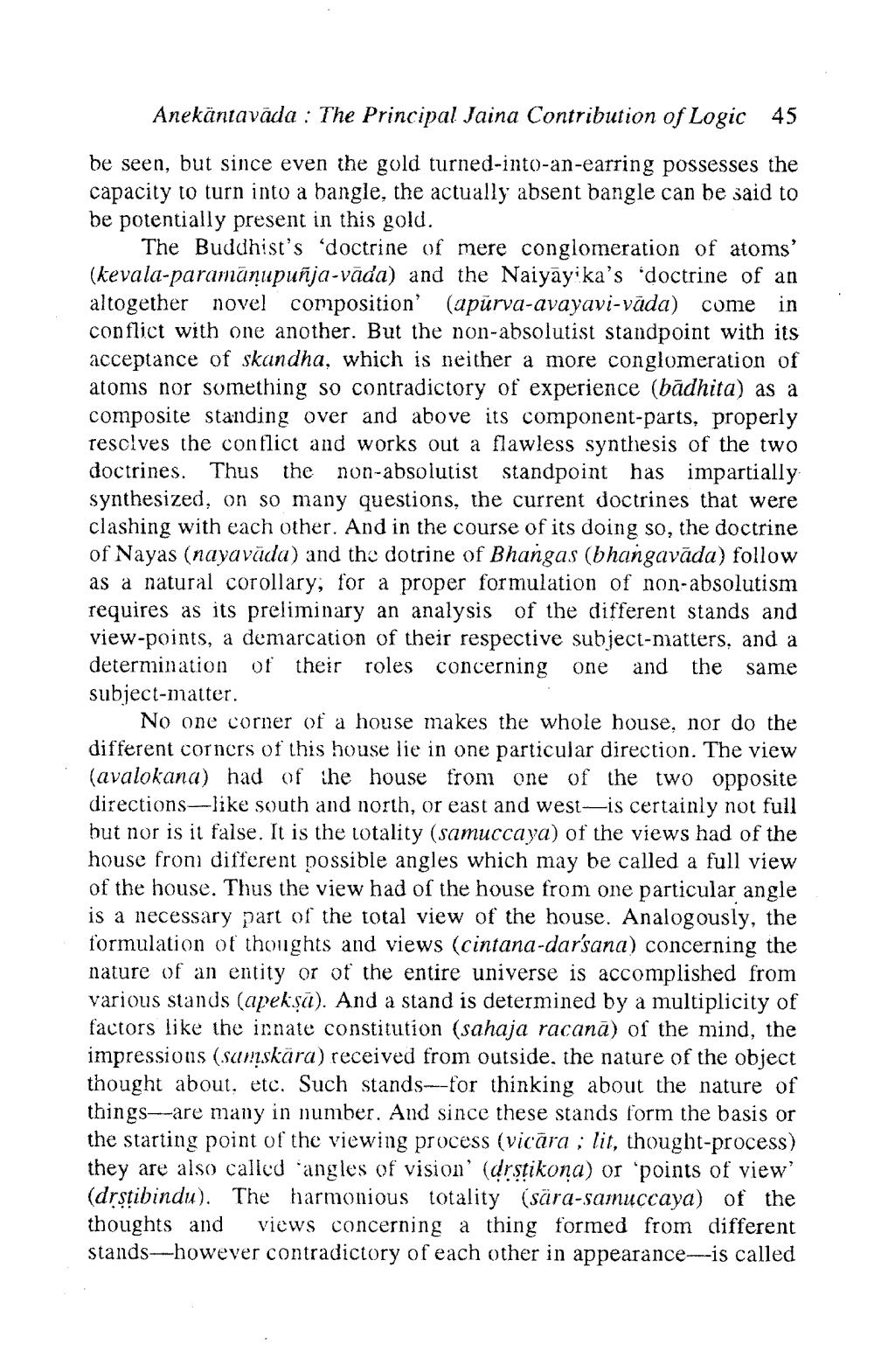________________
Anekantavāda : The Principal Jaina Contribution of Logic 45
папирите
be seen, but since even the gold turned-into-an-earring possesses the capacity to turn into a bangle, the actually absent bangle can be said to be potentially present in this gold.
The Buddhist's doctrine of mere conglomeration of atoms' (kevala-paramánupuñja-vada) and the Naivāyika's "doctrine of an altogether novel composition' (apūrva-avayavi-vāda) come in conflict with one another. But the non-absolutist standpoint with its acceptance of skandha, which is neither a more conglomeration of atoms nor something so contradictory of experience (bädhita) as a composite standing over and above its component-parts, properly resolves the conflict and works out a flawless synthesis of the two doctrines. Thus the non-absolutist standpoint has impartially synthesized, on so many questions, the current doctrines that were clashing with each other. And in the course of its doing so, the doctrine of Nayas (nayavāda) and the dotrine of Bhangas (bhangavāda) follow as a natural corollary, for a proper formulation of non-absolutism requires as its preliminary an analysis of the different stands and view-points, a demarcation of their respective subject matters, and a determination of their roles concerning one and the same subject-matter.
No one corner of a house makes the whole house, nor do the different corners of this house lie in one particular direction. The view (avalokana) had of the house from one of the two opposite directions-like south and north, or east and west—is certainly not full but nor is it false. It is the lotality (samuccaya) of the views had of the house from different possible angles which may be called a full view of the house. Thus the view had of the house from one particular angle is a necessary part of the total view of the house. Analogously, the formulation of thoughts and views (cintana-darsana) concerning the nature of an entity or of the entire universe is accomplished from various stands (apekṣā). And a stand is determined by a multiplicity of factors like the innate constitution (sahaja racanā) of the mind, the impressions (sanskära) received from outside, the nature of the object thought about, etc. Such stands---for thinking about the nature of things--are many in number. And since these stands form the basis or the starting point of the viewing process (vicara ; lit, thought-process) they are also called 'angles of vision (drstikona) or 'points of view' (drstibindu). The harmonious totality (sära-samuccaya) of the thoughts and views concerning a thing formed from different stands-however contradictory of each other in appearance--is called




